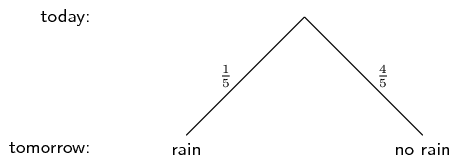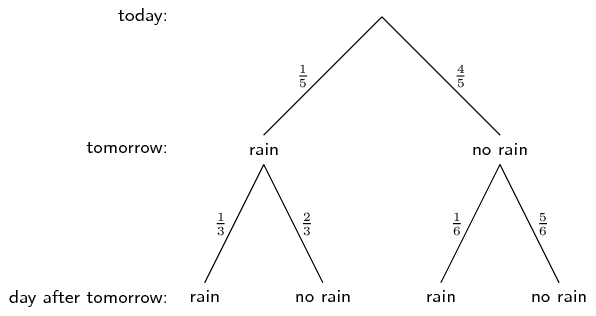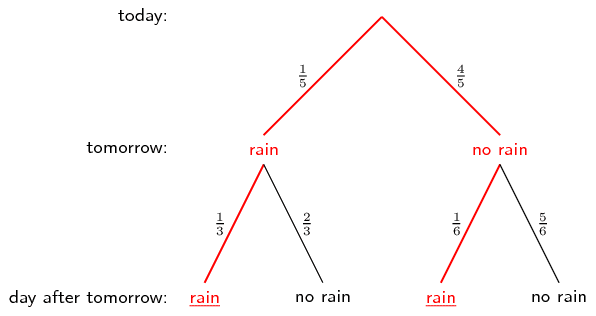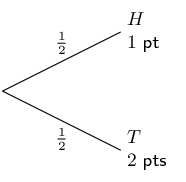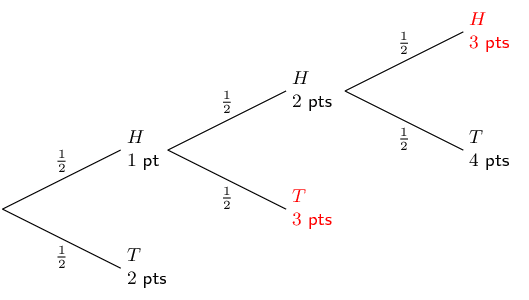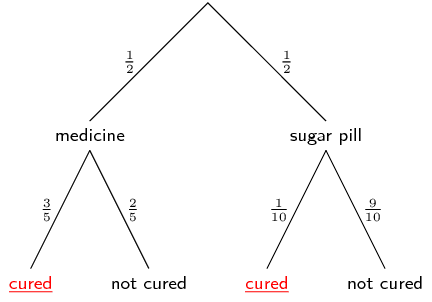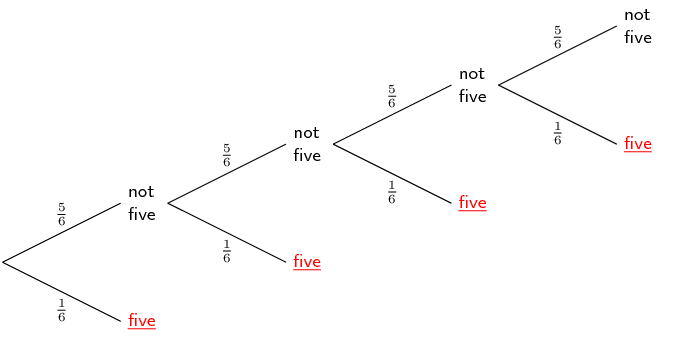You roll a die twice and add up the dots to get a score. Draw a tree diagram to represent this experiment. What is the probability that your score is a multiple of \(\text{5}\)?

The tree diagram for the experiment is shown above. To save space, probabilities were not indicated on the branches of the tree, but every branch has a probability of \(\frac{1}{6}\). The multiples of \(\text{5}\) are underlined. Since the probability of each of the underlined outcomes in \(\frac{1}{6}\times\frac{1}{6} = \frac{1}{36}\) and since there are \(\text{7}\) outcomes that are multiples of \(\text{5}\), the probability of getting a multiple of \(\text{5}\) is \(\frac{7}{36}\).


